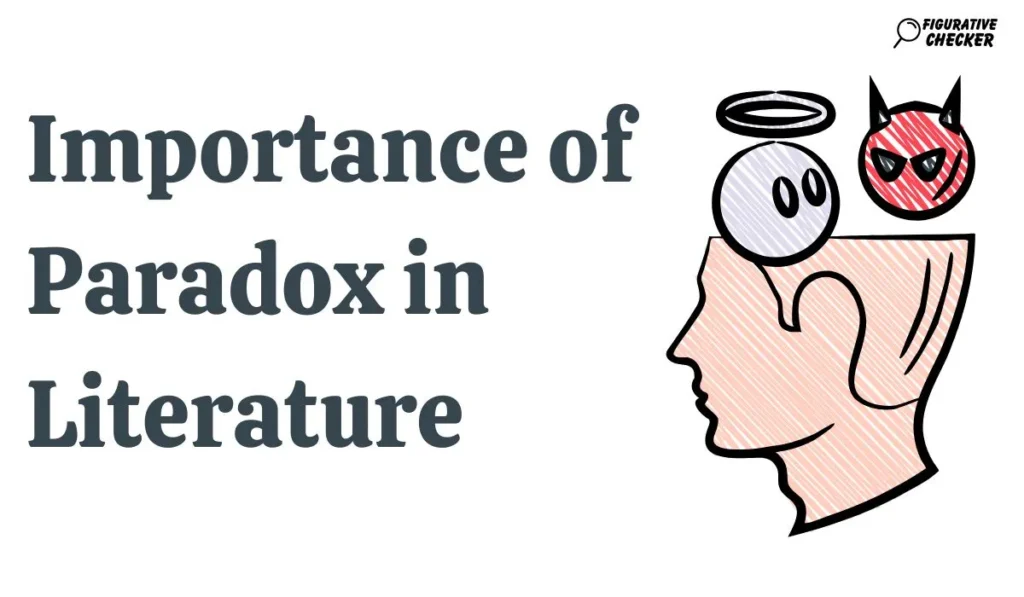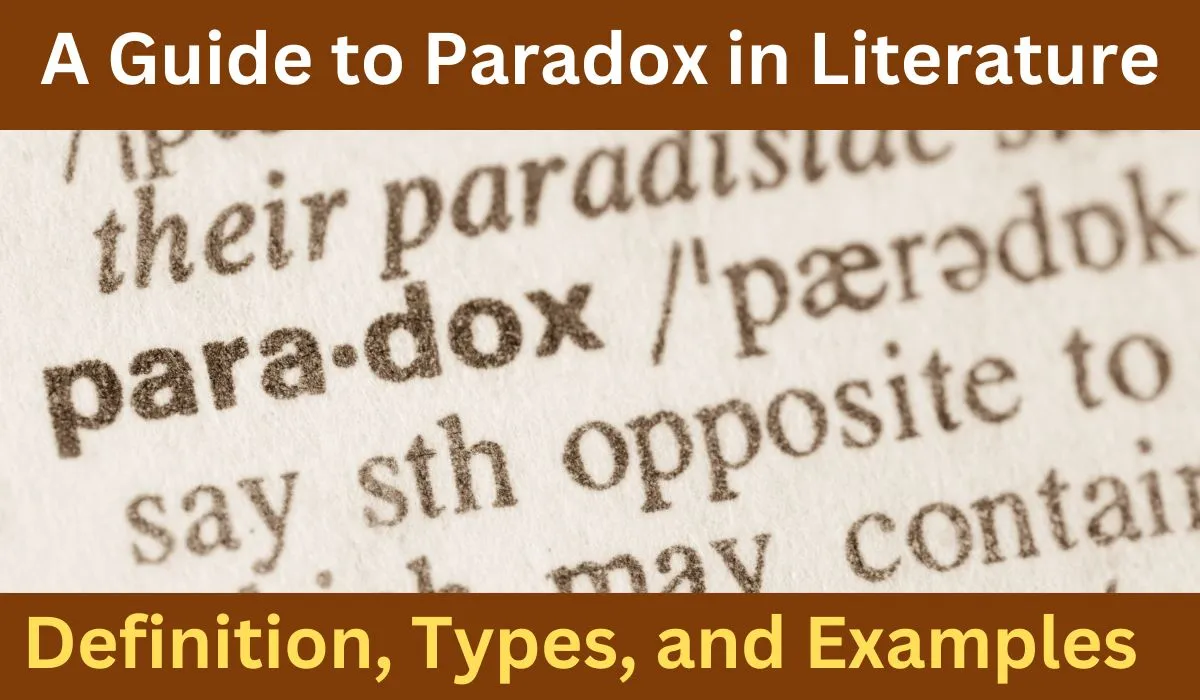Paradoxes are a powerful literary device that captivate readers by challenging their perceptions and provoking thought. Used skillfully, paradoxes can enrich literary works, adding complexity and depth to narratives. This comprehensive guide explores the definition, types, and examples of paradox in literature, highlighting how writers use this fascinating tool to engage readers.
What is a Paradox in Literature?
A paradox is a statement, situation, or concept that appears contradictory or absurd on the surface but reveals a deeper truth upon closer examination. Paradoxes often challenge conventional thinking, encouraging readers to explore complex ideas and uncover hidden meanings.
Key Characteristics of a Paradox
- Contradiction: Paradoxes present conflicting ideas that seem impossible to reconcile.
- Hidden Truth: Despite the apparent contradiction, paradoxes often reveal profound truths.
- Provocation of Thought: Paradoxes prompt readers to think critically and question assumptions.
Importance of Paradox in Literature

Writers use paradoxes for various purposes, such as:
- Enhancing Complexity: Paradoxes add layers of meaning to literary works, making them more intriguing.
- Highlighting Themes: They can underscore central themes, such as the duality of human nature or the complexity of life.
- Engaging Readers: By challenging readers’ understanding, paradoxes encourage deeper engagement with the text.
Types of Paradox in Literature
Paradoxes can take various forms in literature, depending on their purpose and presentation. Below are some common types:
1. Verbal Paradox
A verbal paradox involves a seemingly contradictory statement that reveals a deeper truth upon reflection.
Example:
“I must be cruel to be kind.” — Hamlet by William Shakespeare
In this line, Hamlet acknowledges that his harsh actions are necessary for a greater good.
2. Situational Paradox
A situational paradox occurs when events or circumstances defy logical expectations.
Example:
In George Orwell’s 1984, the Party’s slogans include “War is peace,” “Freedom is slavery,” and “Ignorance is strength.” These contradictory statements reflect the manipulative control exerted by the totalitarian regime.
3. Philosophical Paradox
Philosophical paradoxes explore fundamental questions about existence, knowledge, and truth.
Example:
The Ship of Theseus paradox raises questions about identity and change: If all parts of a ship are replaced over time, is it still the same ship?
4. Paradoxical Characters
Some characters embody paradoxes, displaying contradictory traits that challenge readers’ perceptions.
Example:
Jay Gatsby in F. Scott Fitzgerald’s The Great Gatsby is both a wealthy, successful man and a hopeless romantic yearning for a past that can never be reclaimed.
5. Narrative Paradox
Narrative paradoxes involve contradictions within the plot or structure of a story.
Example:
In Kurt Vonnegut’s Slaughterhouse-Five, the nonlinear timeline creates a paradoxical experience of time, reflecting the protagonist’s fragmented perception.
How Writers Use Paradox
Paradox is a versatile literary device that can be used in various ways to achieve different effects.
1. To Highlight Irony
Paradoxes can underscore ironic situations, adding humor or depth to the narrative.
2. To Create Tension
The contradiction inherent in a paradox can generate tension and intrigue, compelling readers to seek resolution.
3. To Explore Complex Themes
Paradoxes are ideal for exploring complex themes, such as love, identity, and morality.
4. To Challenge Perceptions
By presenting contradictions, paradoxes encourage readers to question their assumptions and think critically.
Examples of Paradox in Literature
1. William Shakespeare’s Julius Caesar
“Cowards die many times before their deaths; The valiant never taste of death but once.”
This paradox highlights the psychological torment of fear and contrasts it with the bravery of facing death head-on.
2. George Orwell’s Animal Farm
“All animals are equal, but some animals are more equal than others.”
This statement exposes the hypocrisy and corruption of the ruling class in the allegorical tale.
3. John Keats’ Ode on a Grecian Urn
“Beauty is truth, truth beauty.”
This paradox invites readers to contemplate the relationship between aesthetics and truth.
4. Oscar Wilde’s The Picture of Dorian Gray
“The only way to get rid of a temptation is to yield to it.”
This paradox challenges conventional morality and highlights Wilde’s exploration of hedonism.
How to Analyze Paradox in Literature
When analyzing paradoxes in literature, consider the following steps:
1. Identify the Paradox
Look for statements, situations, or characters that present contradictions.
2. Examine the Context
Understand the context in which the paradox appears to grasp its significance.
3. Interpret the Hidden Truth
Reflect on the deeper meaning revealed by the paradox.
4. Consider the Author’s Purpose
Think about why the author chose to use a paradox and how it contributes to the overall message of the work.
5. Explore Reader Impact
Analyze how the paradox engages readers and influences their interpretation of the text.
Exploring paradox in literature enriches our understanding of conflicting ideas, much like savoring a diverse menu. For instance, check out the hungry jacks price list to see how simplicity meets variety—an unexpected yet satisfying balance that mirrors the beauty of paradox itself.
Writing with Paradox: Tips for Authors
If you’re a writer looking to incorporate paradoxes into your work, here are some tips:
1. Start with a Theme
Identify a central theme that lends itself to contradiction, such as love, identity, or morality.
2. Craft Thought-Provoking Statements
Create statements that appear contradictory but reveal deeper truths.
3. Use Situational Paradoxes
Develop plot twists or scenarios that defy logical expectations.
4. Create Complex Characters
Design characters with contradictory traits to add depth and intrigue.
5. Maintain Clarity
Ensure that the paradox ultimately contributes to the story’s meaning and doesn’t confuse readers.
Conclusion
Paradoxes are a powerful tool in literature, offering writers a way to explore complex ideas, engage readers, and highlight profound truths. By understanding the various types of paradox and their uses, readers can appreciate the richness of literary works, while writers can craft more thought-provoking and compelling narratives. Whether you’re analyzing a classic text or writing your own story, paradoxes will continue to challenge and inspire.
